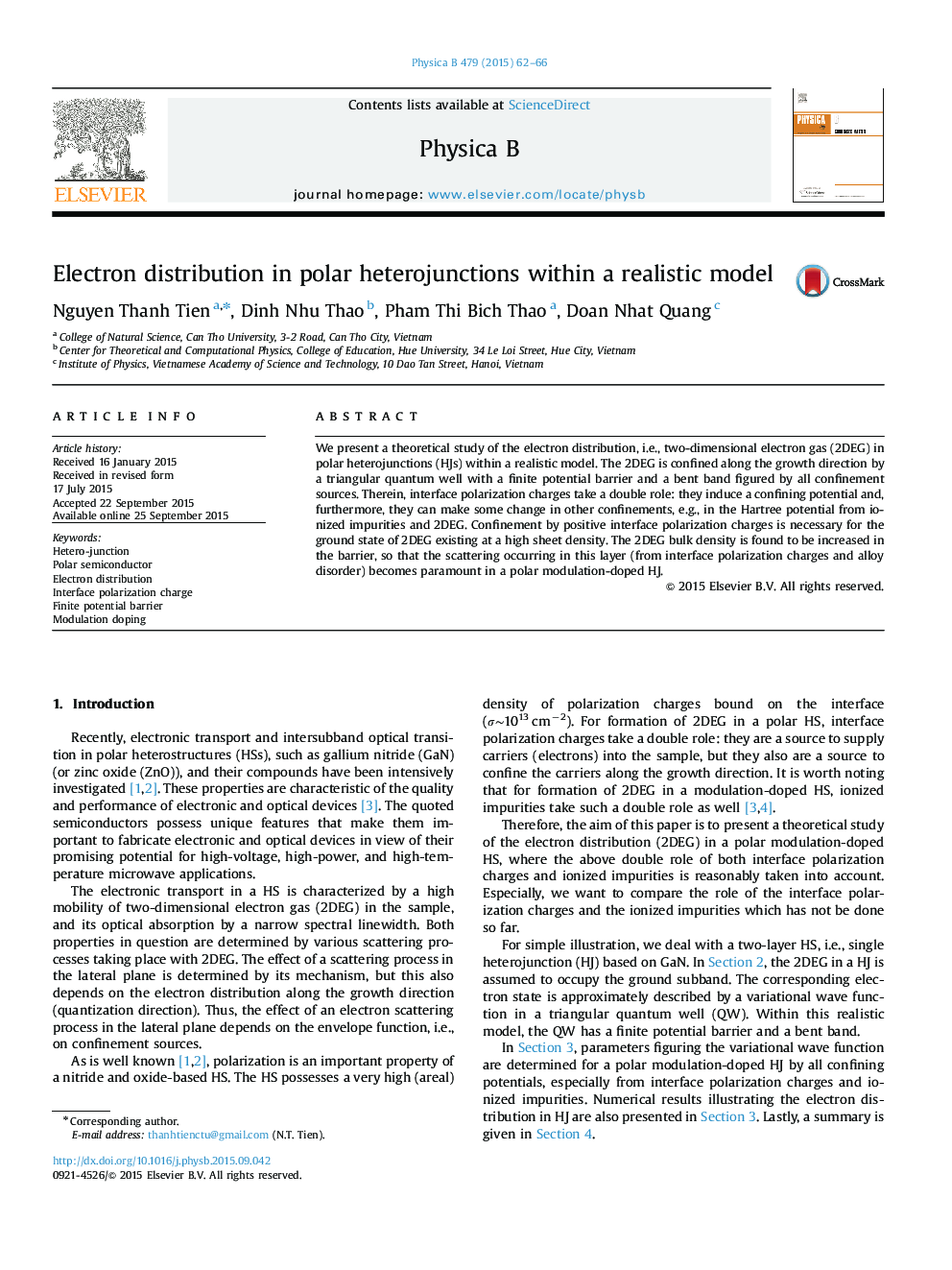| Article ID | Journal | Published Year | Pages | File Type |
|---|---|---|---|---|
| 8161978 | Physica B: Condensed Matter | 2015 | 5 Pages |
Abstract
We present a theoretical study of the electron distribution, i.e., two-dimensional electron gas (2DEG) in polar heterojunctions (HJs) within a realistic model. The 2DEG is confined along the growth direction by a triangular quantum well with a finite potential barrier and a bent band figured by all confinement sources. Therein, interface polarization charges take a double role: they induce a confining potential and, furthermore, they can make some change in other confinements, e.g., in the Hartree potential from ionized impurities and 2DEG. Confinement by positive interface polarization charges is necessary for the ground state of 2DEG existing at a high sheet density. The 2DEG bulk density is found to be increased in the barrier, so that the scattering occurring in this layer (from interface polarization charges and alloy disorder) becomes paramount in a polar modulation-doped HJ.
Related Topics
Physical Sciences and Engineering
Physics and Astronomy
Condensed Matter Physics
Authors
Nguyen Thanh Tien, Dinh Nhu Thao, Pham Thi Bich Thao, Doan Nhat Quang,
